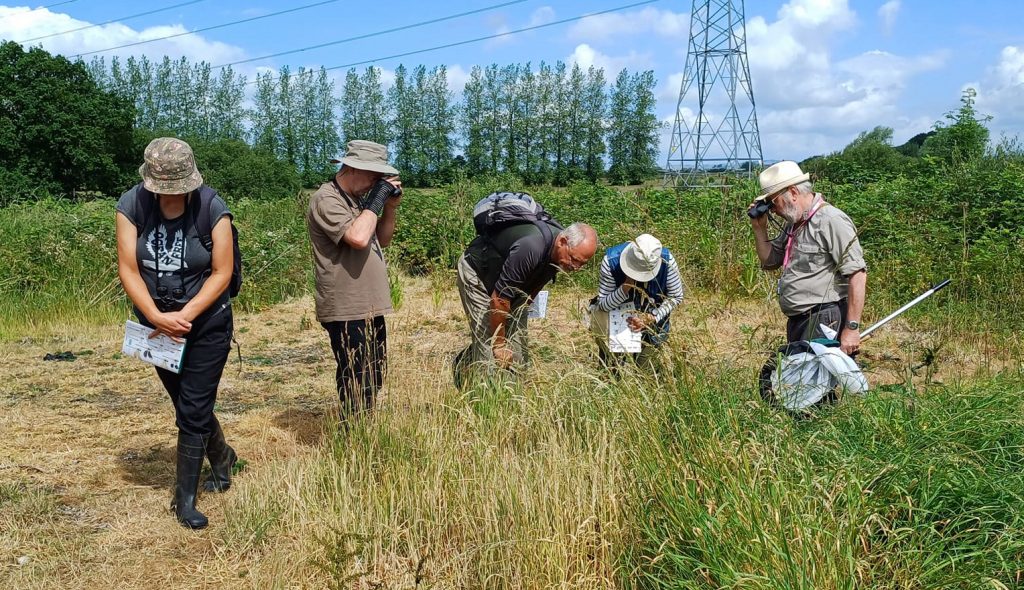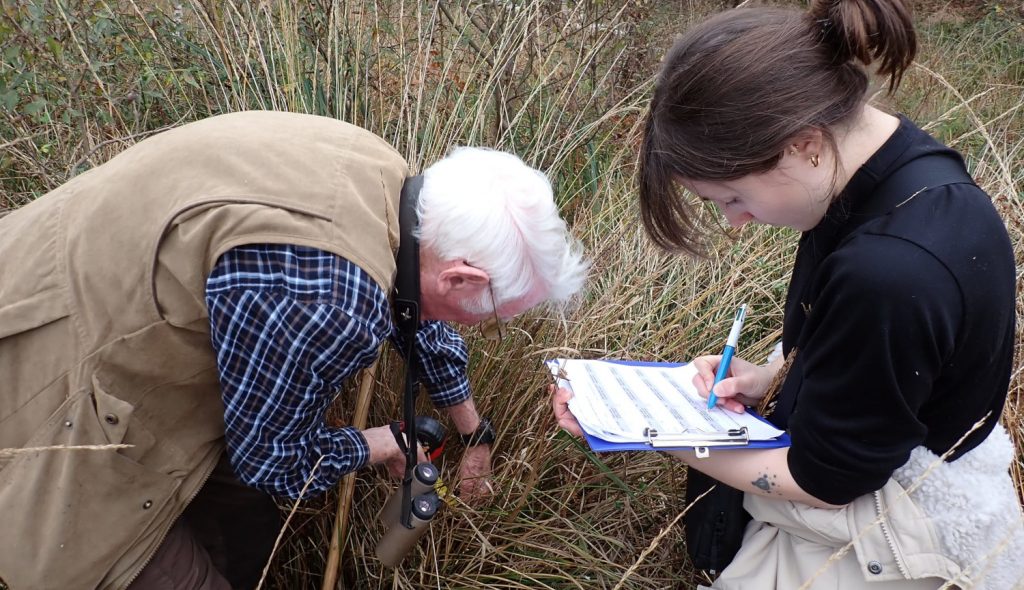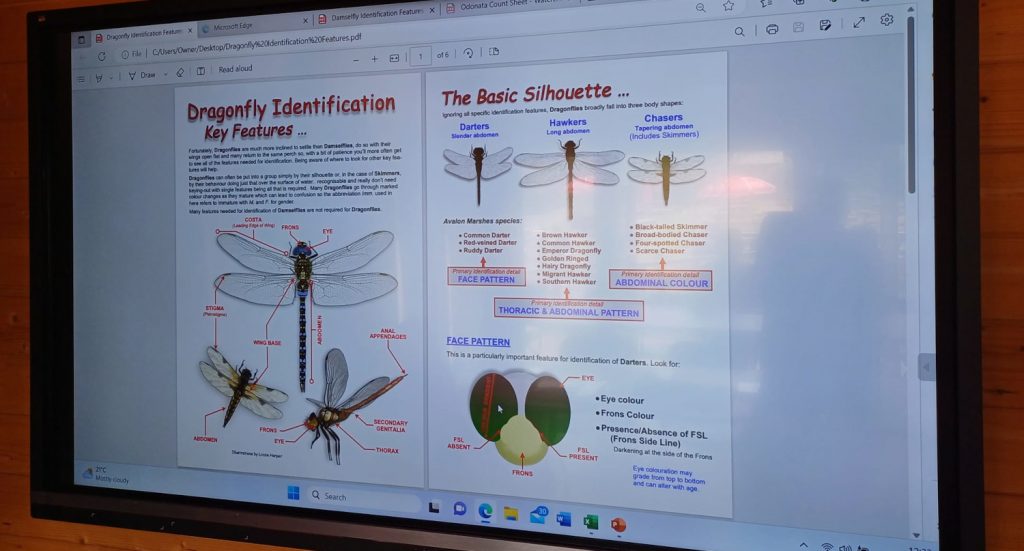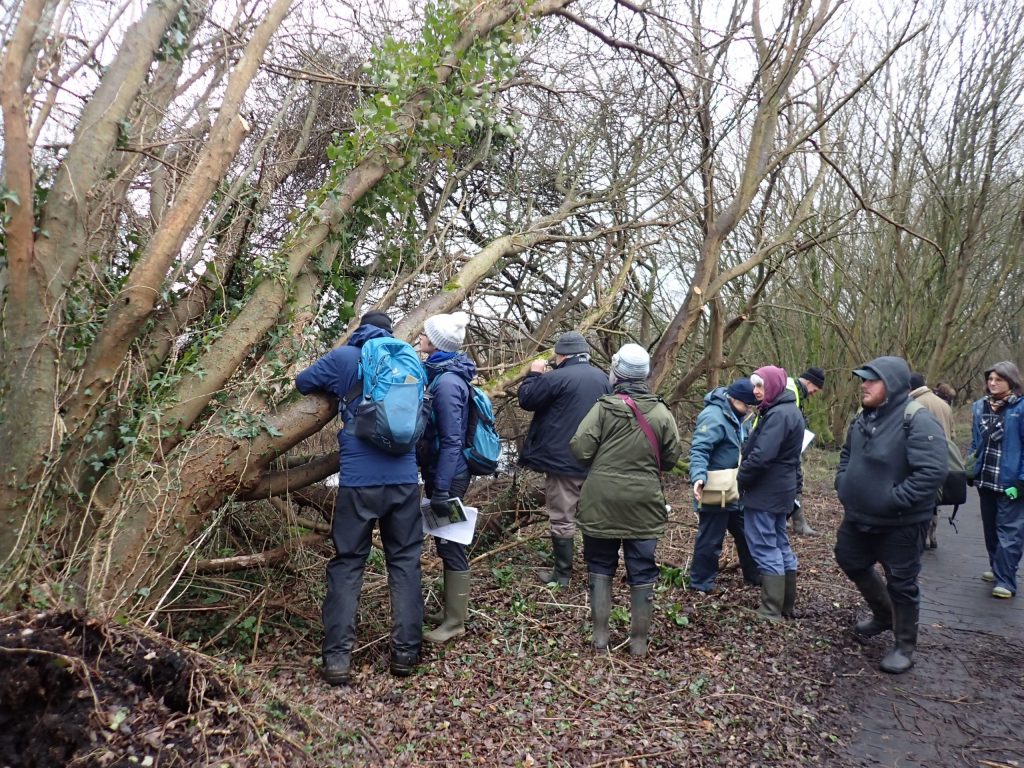RoAM – Recorders of the Avalon Marshes.
RoAM is a group of volunteers who survey and monitor wildlife mostly, but not exclusively around the wetlands of Somerset. We comprise several members who are experts in their fields as well as those who have a general interest in engaging with wildlife and want to help with the studies conducted mainly on the nature reserves. We have no single affiliation and support both the well known wildlife organisations as well as local groups who need some guidance.

Whilst we do lend support to the study of birds, reptiles, mammals and amphibia as well as flowering plants, our prime activity is on the less-well recorded taxa especially invertebrates, non-vascular plants and fungi. The data we collect is directed to the appropriate national recording schemes (where these exist) with copy to the site management so that local and County records are maintained.
RoAM welcomes all skill levels as everyone has their individual potential for contribution. As well as collecting data it is vital this is managed and presented so there is also plenty of opportunity for administrative functions. Everybody has the ability to help make a difference to the understanding of our biodiversity, its changes and contribute to ensuring that we maintain a healthier environment – and that all begins with appreciation of what is around us.

Community Engagement and Training
RoAM regularly take parts with engagement events in support of both small groups as well as wildlife organisations who want to showcase biodiversity to encourage community interest. In the case of RoAM this often includes pond life, microscopic organisms and moths – animals and plants that are vital but often overlooked. These events also allow opportunity for people to engage through RoAM to national monitoring schemes for indicator species such as Butterflies, Dragonflies and Bumblebees. RoAM also raise awareness for often ignored or underestimated taxa including Diptera, the true flies which play a vital role in the wildlife matrix.
Some taxa are easier than others and this is where RoAM’s training provides a pathway for even absolute beginners to develop their identification skills and get involved.
A starting point for many groups is to request an introduction talk which RoAM have experts to support. These use non-scientific language aimed to inspire people to appreciate more and direct those who want to take this further.

The range of what do we do?
Some projects are short-term ‘BioBlitz’ style studies where there is a requirement for a species list but many are long-term providing data trend information over successive years. Examples of this are with butterflies and dragonflies but RoAM has been instrumental in furthering this to include night-flying moth monitoring, different to general moth trapping.
Another vital role performed by RoAM is surveying for single target species of both invertebrates and non-vascular plants – often ones that are classified as endangered. These don’t require frequent monitoring but annual surveys are needed to determine their viable status. One example is a rare tiny aquatic snail – Shining Ramshorn (Segmentina nitida).
Activity also includes Malaise trapping of flying invertebrates as part of the Bioscan ‘Tree of Life’ study for genome sequencing. RoAM was chosen as part of the initial trial that is now a nation-wide scheme run by the Sanger Institute and will provide vital information for future understanding of species change.

RoAM also carries out DNA extraction for identification of challenging taxa where morphological features are unreliable, particularly true of lichens and fungi. It is hoped this will be extended to insect life where, currently, micro-dissection is the only identification method and replacement with non-lethal methods may be possible.
Funding and Costs
Membership of RoAM is currently free though, like every group, we do have costs. No member is paid though we do ask for donations when giving talks with all money going to RoAM. When running training courses we do need to make a nominal per-capita charge. Specialist equipment needs are often supported by the wildlife organisations we support and they allow that to be used by other organisations for the purposes intended.

Getting involved
No experience is needed and everyone has the ability to help. Field activity is one aspect but bench work for projects such as Bioscan is equally important and not to overlook the vital roles performed at the desk without which the data will simply go nowhere. Because the roles are so diverse there is something for everyone and it is all to support the understanding and management of our local biodiversity.